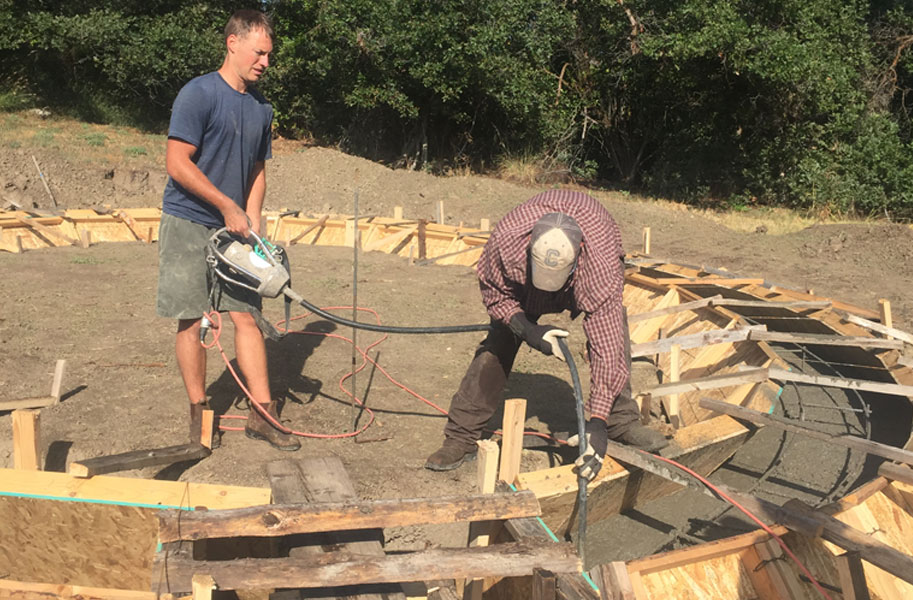
We are used to thinking the foundations for any building are designed to support the structure. And this is the case. But beyond the structural support, foundations can also support the flow of earthly forces, known as chthonic forces, so that they can rise up into the building. For a building to resonate with spiritual forces, above and below, we must pay particular attention to the form of the foundation. There are two types of foundations, both of which support the flow of chthonic forces.
The plinth foundation is a series of concrete forms which support columns above and the walls are constructed between the columns. This system is similar to a timber frame construction.
The second type is a continuous foundation all around the perimeter of the building. The shape, or form, of both types of foundations is a trapezoid, but its angle and proportions are determined by the size and weight of the building, and also the type of soil at the building site.
A foundation is made of concrete. If I have silica soils, we need a bigger foundation and more concrete which is a calcareous substance. In the adaptation of the size of the foundation, we can balance the silica and calcium forces as well as the cosmic and chthonic forces.
Each type of foundation then has a particular angle according to the purpose of the building. For example, a plinth foundation for a house for a man will have an angle of 108°. A shed for storing hay will have plinth foundations with an angle of 70°, while a shed for housing animals will use the angle of 100° for the foundations.
A continuous foundation for a house for a man will use different angles, depending on the soil type and the proportions of the house. See Spiritual Architecture DVDs and Transcripts